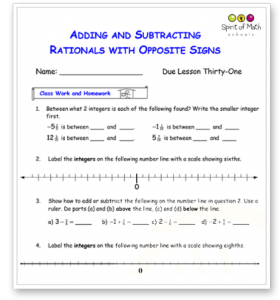The Grade 2 curriculum introduces many mathematical concepts and the weekly 1.5-hour class is packed with new learning. By the end of Grade 2, students can add, multiply, divide as well as work with integers, up to 2-digit by 1-digit calculations. Through drills, students work cooperatively to reach a class goal. They continue to master regrouping numbers to multiples of tens and hundreds, and in addition, they are introduced to primes, composites, special numbers, and they learn to list factors. The grade 2 students later in the year locate rationals on a number line, add and subtract positive and negative rationals, and gain a deep understanding of how numbers relate to each other. In some Grade 2 classes that test pilot curriculum, the students learn to convert numbers from base 10 to other bases with a focus on learning place value. Grade 2 students all write the Spirit of Math International Contest during class time, and they write tests and an exam at the end of the year. The overall curriculum is fast-paced and engaging to our Grade 2 students.
Here’s what we cover in Grade Two:









